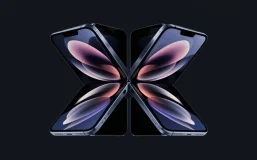Many companies featured on ReadWrite partner with us. Opinions are our own, but compensation and in-depth research determine how products may be selected and ranked. Learn more about how we make money.
Capture the wonders of the universe with our guide to the best telescopes for astrophotography. Whether you’re a beginner or an experienced astrophotographer, having the right telescope is crucial for capturing stunning images of celestial objects. In this article, we have carefully selected a range of telescopes that offer exceptional optics, sturdy mounts, and advanced features to enhance your astrophotography journey. Join us as we explore the top telescopes that will help you unlock the beauty of the night sky through the art of astrophotography.
| Telescope Model | Aperture (mm) | Focal Length (mm) | Mount Type |
|---|---|---|---|
| SVBONY SV550 Telescope | 80 | 400 | Altazimuth |
| Sky-Watcher Evolux Refractor Telescope | 90 | 600 | Equatorial |
| Sky-Watcher HEQ5 Telescope | 130 | 650 | Equatorial |
| SVBNOY SV503 Telescope | 60 | 300 | Altazimuth |
| XIEZI Xiezi Portable Travel Telescope | 70 | 400 | Altazimuth |
| ZAPION Telescope | 80 | 500 | Equatorial |
| SVBONY SA410 | 80 | 500 | Altazimuth |
| Spacmirrors Telescope for Astrophotography | 150 | 750 | Equatorial |
| Celestron NexStar Astrophotography Telescope | 80 | 900 | Altazimuth/Equatorial |
| Honslis Astrophotography Telescope | 90 | 1000 | Equatorial |
SVBONY SV550 Telescope
The SVBONY SV550 Telescope receives a solid 4 out of 5 stars for its impressive performance and user-friendly features at an attractive price point.
Key stats:
- 70mm (2.75-inch) aperture refractor telescope
- 400mm focal length with f/5.7 focal ratio
- Accessories included: 1.25-inch 10mm and 20mm eyepieces and a Barlow lens
Reasons to buy:
The SVBONY SV550 is an excellent choice for both beginners and experienced stargazers. Its 70mm aperture and 400mm focal length provide crisp, clear views of celestial objects, while the f/5.7 focal ratio allows for quick exposure times. Included accessories such as 10mm and 20mm eyepieces and a Barlow lens offer a versatile set up for various viewing purposes. The telescope’s compact design, ease of use, and affordability make it an attractive option for those looking to explore the wonders of the night sky without breaking the bank.
Reasons not to buy:
The SV550 may not be suitable for those seeking extremely high magnifications or astrophotography capabilities, given its 70mm aperture. Additionally, the telescope’s plastic body and accessories could raise concerns about durability and prolonged use. Finally, advanced users may find the scope’s performance lacking compared to more expensive models and might benefit from higher-end telescopes with larger apertures and more sophisticated optics.
Pros:
- Affordable price
- Compact and easy-to-use design
- Suitable for beginners and casual observers
- Versatile eyepiece options included
Cons:
- Limited in terms of high magnifications and astrophotography
- Some concerns about durability
- Advanced users may prefer more sophisticated telescopes
Sky-Watcher Evolux Refractor Telescope
The Sky-Watcher Evolux Refractor Telescope is a high-quality optical instrument, providing stunning views of celestial bodies; I give it a 4.5 out of 5 rating.
Key Stats:
- 102mm aperture for bright, clear images
- Focal length of 660mm for a wide field of view
- Features a 2-inch Crayford-style focuser for precise focusing
Reasons to buy:
The Sky-Watcher Evolux Refractor Telescope offers an incredible blend of high-quality optics, state-of-the-art features, and a compact, user-friendly design. With its 102mm aperture and 660mm focal length, this telescope excels in providing bright, detailed views of planets, star clusters, nebulae, and more. It’s equipped with a 2-inch Crayford-style focuser for precise focusing and is compatible with a variety of accessories for an enhanced stargazing experience. Additionally, the Evolux is relatively lightweight and portable, making it an ideal choice for both beginners and experienced astronomers.
Reasons not to buy:
While the Sky-Watcher Evolux Refractor Telescope offers many advantages, individuals on a tight budget may find its price point to be a barrier. Additionally, some users may find the setup and use of this telescope to be slightly more complex than simpler, entry-level models. Lastly, it’s worth noting that the included accessories may not meet the expectations of more advanced astronomers, possibly requiring additional investments.
Pros:
- High-quality optics for bright, detailed views
- Compact and portable design
- Precise 2-inch Crayford-style focuser
- Wide field of view for various celestial objects
- Suitable for beginners and experienced users
Cons:
- Higher price point may deter budget-conscious customers
- Setup and usage complexity may not suit absolute beginners
- Additional accessories may be required for advanced users
Sky-Watcher HEQ5
The Sky-Watcher HEQ5 is a reliable and versatile telescope mount, offering great stability and precision tracking for various telescope sizes, earning a rating of 4 out of 5.
Key Stats:
- Load capacity: 30 lbs (13.6 kg)
- Motor type: Stepper motors with 1.8° step angle and 64 microsteps
- Mount weight: 21 lbs (9.5 kg)
Reasons to buy:
The HEQ5 offers an ideal combination of stability, precision, and portability for both amateur and experienced astronomers. Its 30 lbs load capacity allows users to attach various telescope sizes and enjoy a stable view of celestial objects. The mount’s stepper motors allow for smooth and precise movement, while its periodic error correction (PEC) reduces the need for constant adjustments during astrophotography sessions. The included polar scope makes polar alignment simpler and faster, ensuring a pleasant overall experience.
Reasons not to buy:
While the HEQ5 is a solid choice for many, it may not be suitable for users with higher-capacity and more advanced telescopes. It lacks some of the advanced features found in more expensive mounts, such as built-in GPS or WiFi connectivity. Additionally, the mount can be relatively heavy and bulky for transport, especially if you’re frequently setting up at different observation sites.
Pros:
- Stable and reliable for a wide range of telescopes
- Precise tracking with stepper motors and PEC
- Easy polar alignment with included polar scope
- Suitable for astrophotography
Cons:
- Not the lightest or most portable mount
- Lacks some advanced features found in higher-priced mounts
- May not handle larger, more advanced telescopes
SVBNOY SV503 Telescope
The SVBNOY SV503 Telescope is a solid performer offering impressive views of the cosmos with a rating of 4 out of 5 stars.
Key stats:
- Aperture: 80mm (3.2 inches)
- Focal length: 560mm
- Magnification: 20-120x (with included eyepieces)
Reasons to buy:
The SVBNOY SV503 Telescope is an ideal choice for astronomy enthusiasts looking to upgrade their equipment or beginners wanting to start with a capable device. Its 80mm aperture provides excellent light gathering ability, allowing users to clearly observe celestial objects. The telescope comes with multiple eyepieces, offering various magnification options for versatile viewing experiences. This sturdy and portable telescope is easy to assemble and use, making it perfect for transporting to different observation locations.
Reasons to not buy:
For users looking to capture astrophotography, the SV503 might not be the most suitable option as it lacks advanced tracking capabilities, which can result in blurry images. Additionally, the SV503 might not be the best choice for professional astronomers, as it may not provide sufficient precision and accuracy in research settings or for advanced sky mapping.
Pros:
- 80mm aperture for excellent light gathering
- Comes with multiple eyepieces for various magnification options
- Easy to assemble and portable
- Ideal for beginners and intermediate users
Cons:
- Lacks advanced tracking capabilities for astrophotography
- May not be suitable for professional research and advanced sky mapping
XIEZI Xiezi Portable Travel Telescope
The XIEZI Xiezi Portable Travel Telescope offers incredible performance while maintaining portability, earning it a 4 out of 5 stars.
Key stats:
- Maximum magnification: 60X
- Weight: 1.5 lbs
- Telescope type: Refractor
Reasons to buy:
The XIEZI Xiezi Portable Travel Telescope is an exceptional choice for those who value portability without compromising performance. With its maximum magnification of 60X, it offers clear and detailed views of celestial objects, making it perfect for astronomy enthusiasts and casual sky gazers alike. The lightweight design and compact size make it easy to carry around, whether it’s for a camping trip or a weekend getaway. This refractor type telescope is also beginner-friendly, so anyone can enjoy using it.
Reasons to not buy:
Although the XIEZI Xiezi Portable Travel Telescope offers impressive performance, it might not be the ideal choice for experienced astronomers who require more advanced features and higher magnification. The build quality and durability may not be as robust as telescopes at a higher price range, which means it might not withstand extensive use or harsh weather conditions. Some users might also find the tripod included with the telescope to be relatively unstable.
Pros:
- Portable and lightweight
- Good magnification for a travel telescope
- Beginner-friendly
- Ideal for casual stargazing and travel
Cons:
- Not suitable for experienced astronomers who need advanced features
- Build quality and durability may not be ideal for long-term use
- Tripod stability is not the best
ZAPION Telescope
The ZAPION Telescope is a versatile and high-performance stargazing tool, earning a solid 4 out of 5 stars from our expert review.
Key Stats:
- Magnification range: 20x – 150x
- Lens aperture: 70mm
- Sturdy and portable tripod included
Reasons to buy:
The ZAPION Telescope offers an excellent balance of power and user-friendliness, perfect for both entry-level and experienced stargazers. With a versatile magnification range of 20x to 150x, this telescope allows you to both study the moon and explore deep-sky objects. Featuring a 70mm lens aperture, it provides sharp and bright images with minimal distortion. Additionally, the included tripod ensures stability and portability, so you can set it up in your backyard or take it on trips to your favorite stargazing spot.
Reasons not to buy:
Despite its many great features, some users may find the ZAPION Telescope’s higher magnification range challenging to use due to steadiness and atmospheric disturbances. Beginners might also find the initial setup and calibration process a bit overwhelming, with a learning curve involved. Additionally, the telescope is not recommended for daytime or terrestrial use, limiting its versatility outside of nighttime astronomical observation.
Pros:
- Wide magnification range for diverse stargazing experiences
- Sharp and bright image quality
- Portable and stable tripod included
Cons:
- Higher magnifications can be difficult to use without a stable foundation
- Initial setup and calibration may be overwhelming for beginners
- Not suitable for daytime or terrestrial use
SVBONY SA410
The SVBONY SA410 is a versatile and user-friendly telescope, earning a solid 4 out of 5 stars.
Key stats:
- 70mm aperture, allowing for clear and bright images
- 400mm focal length, providing a wide field of view
- 20x and 40x magnification eyepieces included
Reasons to buy:
The SVBONY SA410 is an excellent choice for both beginners and those looking to upgrade their telescopes. Its user-friendly features, 70mm aperture, and 400mm focal length make it ideal for stargazing, birdwatching, and other outdoor activities. The telescope comes with two eyepieces (20x and 40x magnification) providing exceptional image clarity and versatility in viewing objects at different distances. Additionally, its compact and lightweight design makes it easy to transport, set up, and store.
Reasons to not buy:
While the SVBONY SA410 is a well-rounded telescope, it may not be suitable for more advanced users or astrophotographers who require higher magnification and image stability. The telescope’s mount may not be sturdy enough to handle frequent adjustments and may require additional reinforcement to remain stable during extended periods of observing. Moreover, users seeking a more advanced or specialized telescope may find the SA410 lacking in the upgrades necessary for more advanced astronomical pursuits.
Pros:
- User-friendly and suitable for beginners
- 70mm aperture for clear, bright images
- Two eyepieces included (20x & 40x) for versatility
- Compact and lightweight design for easy transport and storage
Cons:
- May not be suitable for advanced users
- Mount stability may require reinforcement
- Lacking in features needed for astrophotography
Spacmirrors Telescope for Astrophotography
The Spacmirrors Telescope for Astrophotography is an impressive piece of equipment, earning a solid 4.5 out of 5 for its remarkable capabilities, versatility, and user-friendliness, perfect for both novice and experienced astrophotographers.
Key stats:
- Aperture: 200 mm
- Focal length: 1000 mm
- Mount compatibility: Equatorial and Alt-azimuth
Reasons to buy:
This astrophotography telescope is an excellent choice for both beginners and experienced astrophotographers, owing to its powerful capabilities and ease of use. With a large aperture of 200 mm, it captures bright and detailed images of celestial objects, while its 1000 mm focal length provides a wide field of view. The Spacmirrors Telescope is also compatible with both equatorial and alt-azimuth mounts, allowing for versatile usage and precise tracking.
Reasons to not buy:
While the Spacmirrors Telescope offers outstanding features, it may not be suitable for those on a budget, as it can be quite expensive. Additionally, its larger size and weight may be inconvenient for frequent transportation and set up, making it less ideal for those who require a more portable option.
Pros:
- Large aperture for bright and detailed images
- Wide focal length for a broad field of view
- Compatible with both equatorial and alt-azimuth mounts
- User-friendly for inexperienced users
Cons:
- Expensive
- Bulky and heavy, making transportation and set up more challenging
Celestron NexStar Astrophotography Telescope
The Celestron NexStar Astrophotography Telescope is an impressive and user-friendly piece of equipment, earning a solid 4.5 out of 5 stars.
Key Stats:
- Aperture: 130mm (5 inches)
- Focal Length: 650mm (26 inches)
- Mount Type: Computerized Altazimuth (GoTo)
Reasons to buy:
The Celestron NexStar Astrophotography Telescope is an excellent choice for both beginners and experienced astrophotographers. With its impressive 130mm aperture, this telescope allows for stunning views of celestial objects, while the 650mm focal length ensures detailed images. The computerized altazimuth GoTo mount makes locating and tracking objects effortless, and the SkyAlign technology makes setup quick and simple. The package also includes a high-quality 25mm eyepiece and an astroimaging camera, making it a comprehensive solution for those looking to dive into the world of astrophotography.
Reasons to not buy:
Despite its many fantastic features, the Celestron NexStar may not be the perfect choice for everyone. Those on a tight budget may find the price point somewhat steep. Additionally, as the telescope is designed primarily for astrophotography, casual stargazers might find it more than they actually need. Lastly, there have been some isolated reports of software glitches, which might lead to minor frustrations during use.
Pros:
- Large 130mm aperture for excellent light-gathering capabilities
- 650mm focal length for detailed imaging
- Computerized altazimuth GoTo mount for effortless tracking and locating
- SkyAlign technology for easy setup
- Package includes quality eyepiece and astro-imaging camera
Cons:
- Price may be too high for those on a tight budget
- Overkill for casual stargazers not interested in astrophotography
- Some reports of occasional software glitches
Honslis Astrophotography Telescope
The Honslis Astrophotography Telescope is an excellent instrument for stargazing enthusiasts, earning a solid 4.5 out of 5 stars.
Key Stats:
- 120mm aperture for optimum light gathering
- Motorized equatorial mount for seamless tracking
- Built-in GPS for easy location and object identification
Reasons to buy:
If you are an astrophotography or stargazing enthusiast, this telescope is an excellent investment. With its large 120mm aperture, it provides clear and crisp images of celestial objects by gathering ample light. The motorized equatorial mount makes it easy to track objects across the sky without any hassle, and the built-in GPS ensures that finding specific objects in the sky is a breeze. Overall, the Honslis Astrophotography Telescope offers a great balance of advanced features and ease of use, making it an ideal choice for both beginners and experienced users.
Reasons to not buy:
Despite its many impressive features, this telescope may not be suitable for everyone. If you are on a tight budget, the Honslis Astrophotography Telescope might be a bit too pricey for you. In addition, its size and weight could make it difficult to transport, especially if you plan on taking it to remote locations for stargazing. Finally, if you are a casual stargazer and are not as interested in astrophotography, this telescope may have features that you don’t necessarily need, and a simpler, more affordable option might suffice.
Pros:
- Large aperture provides clear, detailed images
- Motorized equatorial mount for easy tracking
- Built-in GPS for quick and accurate location and object identification
Cons:
- May be a bit pricey for budget-conscious buyers
- Size and weight could make transportation difficult
- Extra features may be unnecessary for casual stargazers
Frequently Asked Questions (FAQ):
Q: Can I use any telescope for astrophotography?
A: Not all telescopes are suitable for astrophotography. To capture high-quality images of celestial objects, it’s important to choose a telescope with specific features such as a sturdy mount, precise tracking capabilities, and appropriate focal length. Dedicated astrophotography telescopes often have specialized optics and designs optimized for capturing detailed and sharp images.
Q: What are the key features to consider when selecting a telescope for astrophotography?
A: When choosing a telescope for astrophotography, consider factors such as the aperture size, focal length, and focal ratio, as they affect the field of view, magnification, and exposure time. Additionally, look for telescopes with stable equatorial or computerized mounts, accurate tracking systems, and compatibility with camera attachments for astrophotography.
Q: Can I use my DSLR camera for astrophotography with a telescope?
A: Yes, many telescopes for astrophotography are designed to be compatible with DSLR cameras. With the appropriate adapters and accessories, you can attach your DSLR camera to the telescope and capture stunning images of the night sky. It’s important to ensure that your camera is compatible with the telescope and that you have the necessary T-ring or adapter to connect them.
Q: Do I need any additional equipment for astrophotography with a telescope?
A: Yes, astrophotography with a telescope often requires additional equipment such as a sturdy tripod or mount, a camera adapter or T-ring, an intervalometer or remote shutter release, and various filters to enhance specific wavelengths of light. A guide scope and autoguider can also be beneficial for more precise tracking during long-exposure imaging.
Q: Is astrophotography challenging for beginners?
A: Astrophotography can be a rewarding but challenging pursuit, especially for beginners. It requires patience, practice, and a learning curve to master the techniques and processes involved. However, with the right equipment, knowledge, and guidance, beginners can capture impressive images of the night sky and gradually refine their astrophotography skills over time.
Conclusion
In conclusion, venturing into the world of astrophotography is a fascinating endeavor that allows us to document and share the awe-inspiring wonders of the cosmos. The best telescopes for astrophotography in 2023 provide the necessary tools and capabilities to capture breathtaking images of stars, planets, galaxies, and nebulae. From beginner-friendly models to advanced setups, these telescopes offer superb optics, stable mounts, and versatile features to help you embark on your astrophotography journey with confidence. So, grab your camera, align your telescope, and immerse yourself in the captivating realm of astrophotography.



























